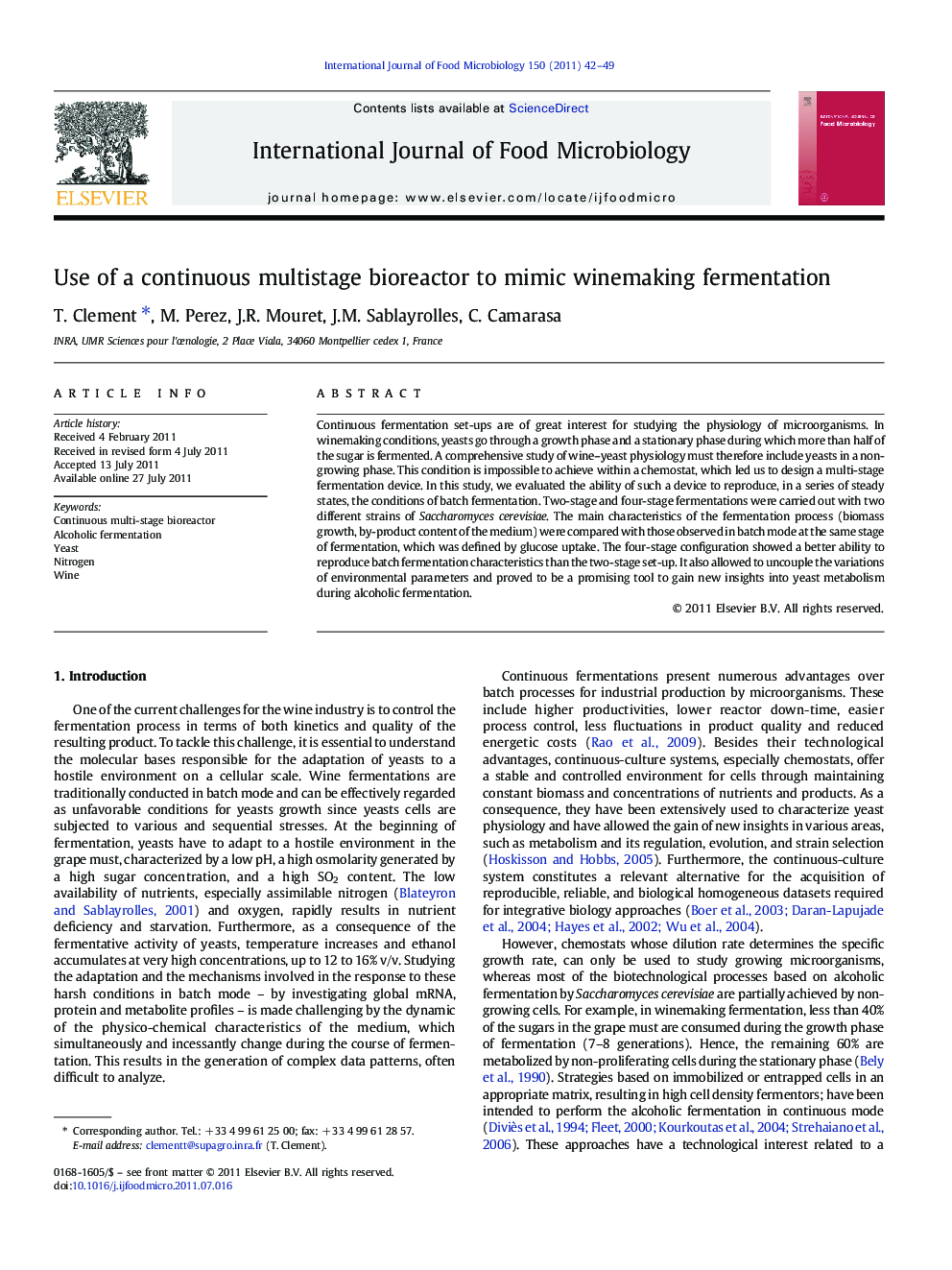| Article ID | Journal | Published Year | Pages | File Type |
|---|---|---|---|---|
| 4368150 | International Journal of Food Microbiology | 2011 | 8 Pages |
Continuous fermentation set-ups are of great interest for studying the physiology of microorganisms. In winemaking conditions, yeasts go through a growth phase and a stationary phase during which more than half of the sugar is fermented. A comprehensive study of wine–yeast physiology must therefore include yeasts in a non-growing phase. This condition is impossible to achieve within a chemostat, which led us to design a multi-stage fermentation device. In this study, we evaluated the ability of such a device to reproduce, in a series of steady states, the conditions of batch fermentation. Two-stage and four-stage fermentations were carried out with two different strains of Saccharomyces cerevisiae. The main characteristics of the fermentation process (biomass growth, by-product content of the medium) were compared with those observed in batch mode at the same stage of fermentation, which was defined by glucose uptake. The four-stage configuration showed a better ability to reproduce batch fermentation characteristics than the two-stage set-up. It also allowed to uncouple the variations of environmental parameters and proved to be a promising tool to gain new insights into yeast metabolism during alcoholic fermentation.
► We performed alcoholic fermentation in a multi-stage continuous fermentor. ► We compared the yeast physiology in batch and multi-stage fermentation. ► Batch alcoholic fermentation conditions can be reproduced in a multi-stage fermentor. ► At least 3 stages are necessary to reproduce the whole fermentation process. ► Both growth and stationary phases are well reproduced in the multi-stage fermentor.
